SLOS626B December 2009 – November 2015 TPA2011D1
PRODUCTION DATA.
- 1 Features
- 2 Applications
- 3 Description
- 4 Revision History
- 5 Device Comparison Table
- 6 Pin Configuration and Functions
- 7 Specifications
- 8 Parameter Measurement Information
- 9 Detailed Description
- 10Application and Implementation
- 11Power Supply Recommendations
- 12Layout
- 13Device and Documentation Support
- 14Mechanical, Packaging, and Orderable Information
7 Specifications
7.1 Absolute Maximum Ratings
over operating free-air temperature range, TA = 25°C (unless otherwise noted)(1)| MIN | MAX | UNIT | |||
|---|---|---|---|---|---|
| VDD, PVDD | Supply voltage | In active mode | –0.3 | 6 | V |
| In shutdown mode | –0.3 | 6 | V | ||
| VI | Input voltage | EN, IN+, IN– | –0.3 | VDD + 0.3 | V |
| RL | Minimum load resistance | 3.2 | Ω | ||
| Output continuous total power dissipation | See Dissipation Ratings | ||||
| TA | Operating free-air temperature | –40 | 85 | °C | |
| TJ | Operating junction temperature | –40 | 150 | °C | |
| Lead temperature 1,6 mm (1/16 inch) from case for 10 seconds | 260 | °C | |||
| Tstg | Storage temperature | –65 | 85 | °C | |
(1) Stresses beyond those listed under absolute maximum ratings may cause permanent damage to the device. These are stress ratings only, and functional operation of the device at these or any other conditions beyond those indicated under recommended operating conditions is not implied. Exposure to absolute–maximum–rated conditions for extended periods may affect device reliability.
7.2 ESD Ratings
| VALUE | UNIT | |||
|---|---|---|---|---|
| V(ESD) | Electrostatic discharge | Human-body model (HBM), per ANSI/ESDA/JEDEC JS-001(1) | ±2000 | V |
| Charged-device model (CDM), per JEDEC specification JESD22-C101(2) | ±1000 | |||
(1) JEDEC document JEP155 states that 500-V HBM allows safe manufacturing with a standard ESD control process.
(2) JEDEC document JEP157 states that 250-V CDM allows safe manufacturing with a standard ESD control process.
7.3 Recommended Operating Conditions
| MIN | MAX | UNIT | |||
|---|---|---|---|---|---|
| VDD | Class-D supply voltage | 2.5 | 5.5 | V | |
| VIH | High-level input voltage | EN | 1.3 | V | |
| VIL | Low-level input voltage | EN | 0.35 | V | |
| RI | Input resistor | Gain ≤ 20 V/V (26 dB) | 15 | kΩ | |
| VIC | Common mode input voltage range | VDD = 2.5V, 5.5V, CMRR ≥ 49 dB | 0.75 | VDD-1.1 | V |
| TA | Operating free-air temperature | –40 | 85 | °C | |
7.4 Thermal Information
| THERMAL METRIC(1) | TPA2011D1 | UNIT | |
|---|---|---|---|
| YFF (DSBGA) | |||
| 9 PINS | |||
| RθJA | Junction-to-ambient thermal resistance | 107 | °C/W |
| RθJC(top) | Junction-to-case (top) thermal resistance | 0.9 | °C/W |
| RθJB | Junction-to-board thermal resistance | 18.1 | °C/W |
| ψJT | Junction-to-top characterization parameter | 3.8 | °C/W |
| ψJB | Junction-to-board characterization parameter | 18 | °C/W |
| RθJC(bot) | Junction-to-case (bottom) thermal resistance | N/A | °C/W |
(1) For more information about traditional and new thermal metrics, see the Semiconductor and IC Package Thermal Metrics application report, SPRA953.
7.5 Electrical Characteristics
TA = 25°C (unless otherwise noted)| PARAMETER | TEST CONDITIONS | MIN | TYP | MAX | UNIT | |
|---|---|---|---|---|---|---|
| |VOS| | Output offset voltage (measured differentially) | VI = 0 V, AV = 2 V/V, VDD = 2.5 V to 5.5 V | 1 | 5 | mV | |
| |IIH| | High-level input current | VDD = 5.5 V, VEN = 5.5 V | 50 | μA | ||
| |IIL| | Low-level input current | VDD = 5.5 V, VEN = 0 V | 1 | μA | ||
| I(Q) | Quiescent current | VDD = 5.5 V, no load | 1.8 | 2.5 | mA | |
| VDD = 3.6 V, no load | 1.5 | 2.3 | ||||
| VDD = 2.5 V, no load | 1.3 | 2.1 | ||||
| I(SD) | Shutdown current | VEN = 0.35 V, VDD = 2.5 V to 5.5 V | 0.1 | 2 | μA | |
| RO, SD | Output impedance in shutdown mode | VEN = 0.35 V | 2 | kΩ | ||
| f(SW) | Switching frequency | VDD = 2.5 V to 5.5 V | 250 | 300 | 350 | kHz |
| AV | Gain | VDD = 2.5 V to 5.5 V, RI in kΩ | 285/RI | 300/RI | 315/RI | V/V |
| REN | Resistance from EN to GND | 300 | kΩ | |||
7.6 Operating Characteristics
VDD = 3.6 V, TA = 25°C, AV = 2 V/V, RL = 8 Ω (unless otherwise noted)| PARAMETER | TEST CONDITIONS | MIN | TYP | MAX | UNIT | ||
|---|---|---|---|---|---|---|---|
| PO | Output power | THD + N = 10%, f = 1 kHz, RL = 4 Ω | VDD = 5 V | 3.24 | W | ||
| VDD = 3.6 V | 1.62 | ||||||
| VDD = 2.5 V | 0.70 | ||||||
| THD + N = 1%, f = 1 kHz, RL = 4 Ω | VDD = 5 V | 2.57 | W | ||||
| VDD = 3.6 V | 1.32 | ||||||
| VDD = 2.5 V | 0.57 | ||||||
| THD + N = 10%, f = 1 kHz, RL = 8 Ω | VDD = 5 V | 1.80 | W | ||||
| VDD = 3.6 V | 0.91 | ||||||
| VDD = 2.5 V | 0.42 | ||||||
| THD + N = 1%, f = 1 kHz, RL = 8 Ω | VDD = 5 V | 1.46 | W | ||||
| VDD = 3.6 V | 0.74 | ||||||
| VDD = 2.5 V | 0.33 | ||||||
| Vn | Noise output voltage | VDD = 3.6 V, Inputs AC grounded with CI = 2μF, f = 20 Hz to 20 kHz |
A-weighting | 20 | μVRMS | ||
| No weighting | 25 | ||||||
| THD+N | Total harmonic distortion plus noise | VDD = 5.0 V, PO = 1.0 W, f = 1 kHz, RL = 8 Ω | 0.11% | ||||
| VDD = 3.6 V, PO = 0.5 W, f = 1 kHz, RL = 8 Ω | 0.05% | ||||||
| VDD = 2.5 V, PO = 0.2 W, f = 1 kHz, RL = 8 Ω | 0.05% | ||||||
| VDD = 5.0 V, PO = 2.0 W, f = 1 kHz, RL = 4 Ω | 0.23% | ||||||
| VDD = 3.6 V, PO = 1.0 W, f = 1 kHz, RL = 4 Ω | 0.07% | ||||||
| VDD = 2.5 V, PO = 0.4 W, f = 1 kHz, RL = 4 Ω | 0.06% | ||||||
| PSRR | AC power supply rejection ratio | VDD = 3.6 V, Inputs AC grounded with CI = 2 μF, 200 mVpp ripple, f = 217 Hz |
86 | dB | |||
| CMRR | Common mode rejection ratio | VDD = 3.6 V, VIC = 1 VPP, f = 217 Hz | 79 | dB | |||
| TSU | Startup time from shutdown | VDD = 3.6 V | 4 | ms | |||
| IOC | Overcurrent protection threshold | VDD = 3.6 V, VO+ shorted to VDD | 2 | A | |||
| VDD = 3.6 V, VO– shorted to VDD | 2 | ||||||
| VDD = 3.6 V, VO+ shorted to GND | 2 | ||||||
| VDD = 3.6 V, VO– shorted to GND | 2 | ||||||
| VDD = 3.6 V, VO+ shorted to VO– | 2 | ||||||
| TSD | Time for which output is disabled after a short-circuit event, after which auto-recovery trials are continuously made | VDD = 2.5 V to 5.5 V | 100 | ms | |||
7.7 Dissipation Ratings
| PACKAGE | DERATING FACTOR(1) | TA < 25°C | TA = 70°C | TA = 85°C |
|---|---|---|---|---|
| YFF (DSBGA) | 4.2 mW/°C | 525 mW | 336 mW | 273 mW |
(1) Derating factor measure with high K board.
7.8 Typical Characteristics
VDD = 3.6 V, CI = 0.1 μF, CS1 = 0.1 μF, CS2 = 10 μF, TA = 25°C, RL = 8 Ω (unless otherwise noted)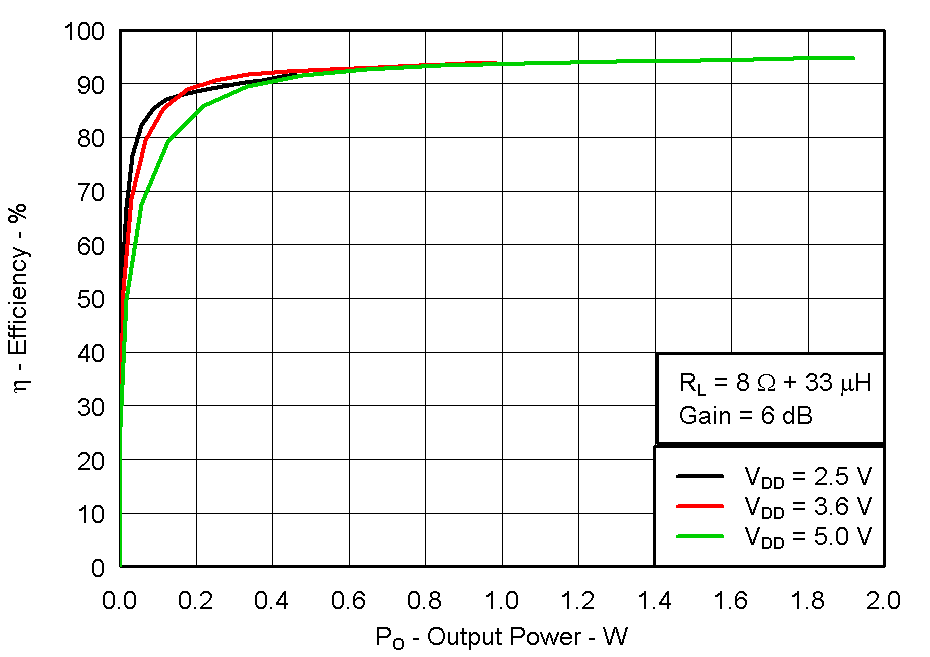 Figure 1. Efficiency vs Output Power
Figure 1. Efficiency vs Output Power
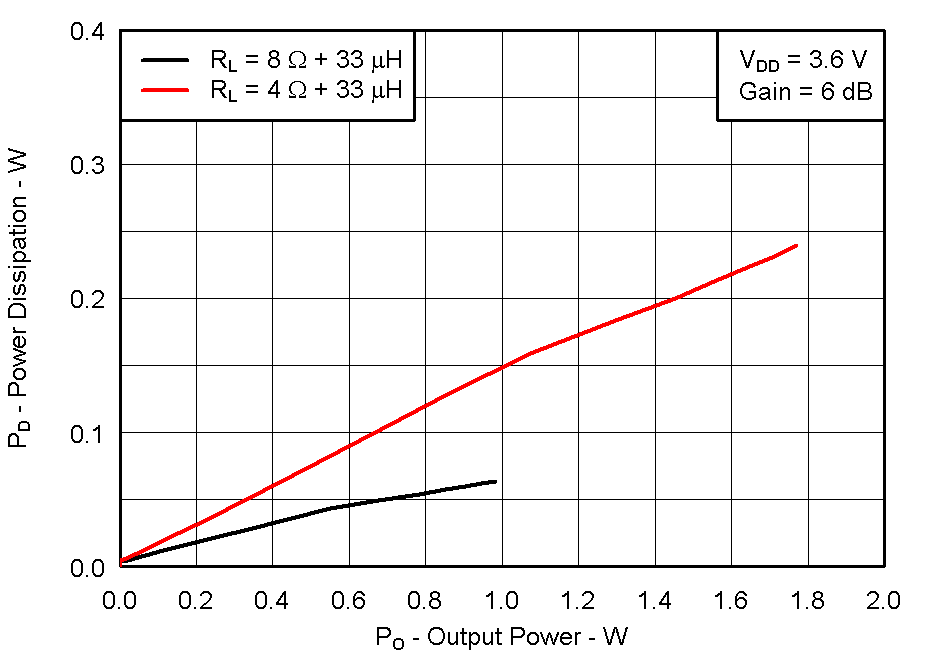 Figure 3. Power Dissipation vs Output Power
Figure 3. Power Dissipation vs Output Power
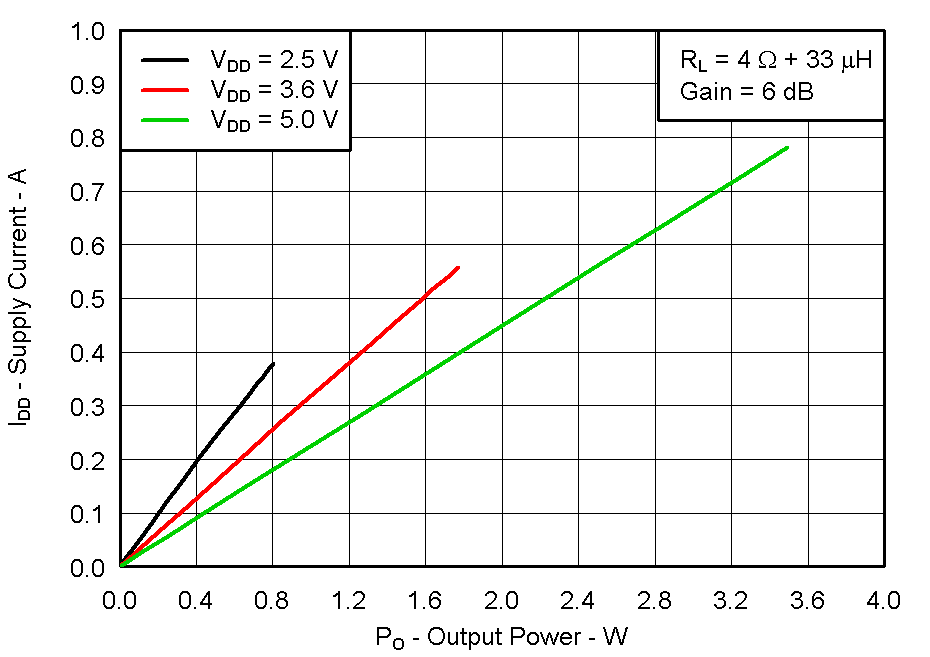 Figure 5. Supply Current vs Output Power
Figure 5. Supply Current vs Output Power
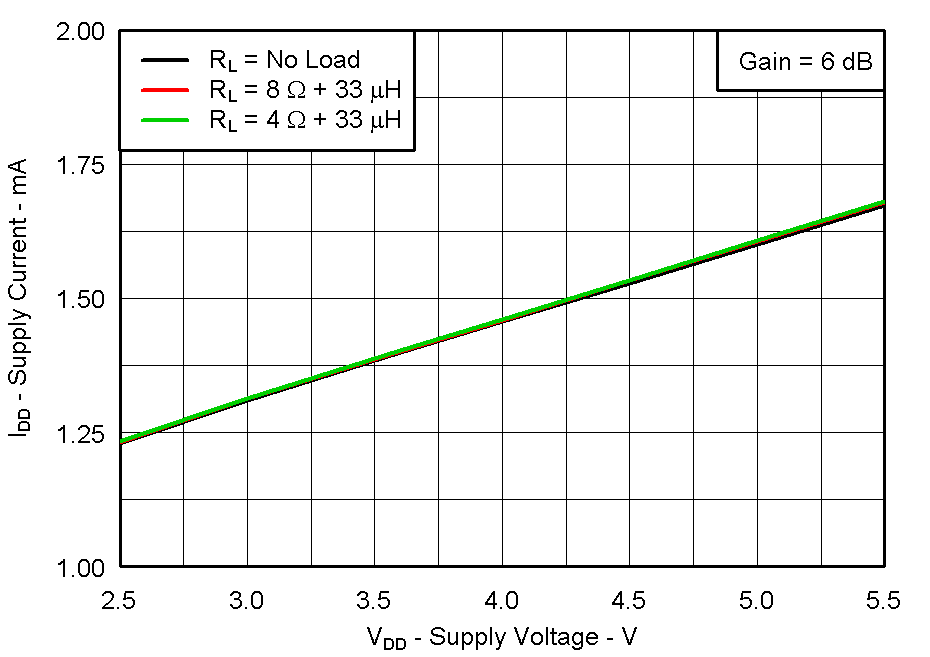 Figure 7. Supply Current vs Supply Voltage
Figure 7. Supply Current vs Supply Voltage
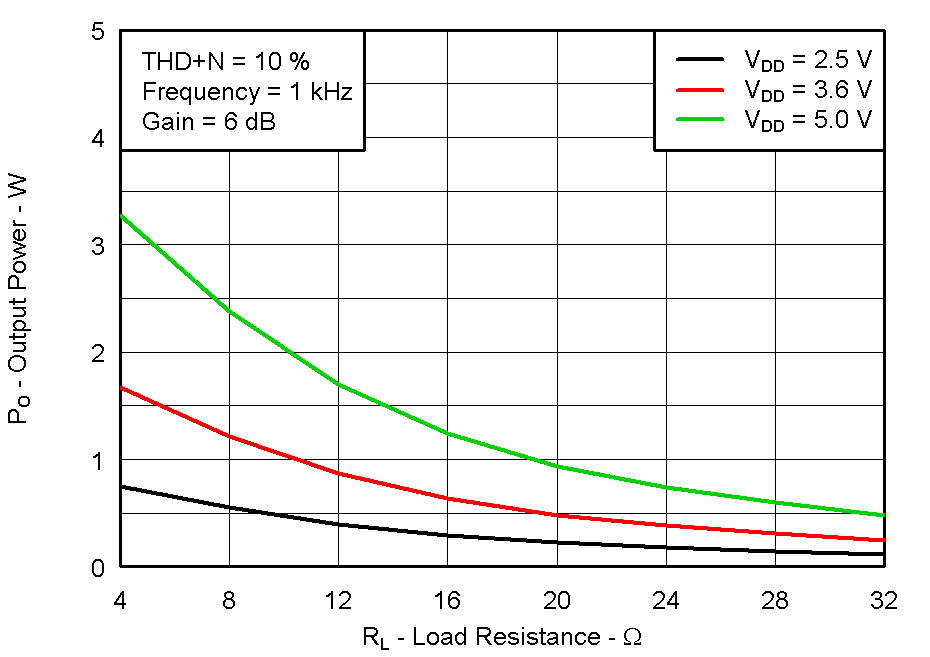 Figure 9. Output Power vs Load Resistance
Figure 9. Output Power vs Load Resistance
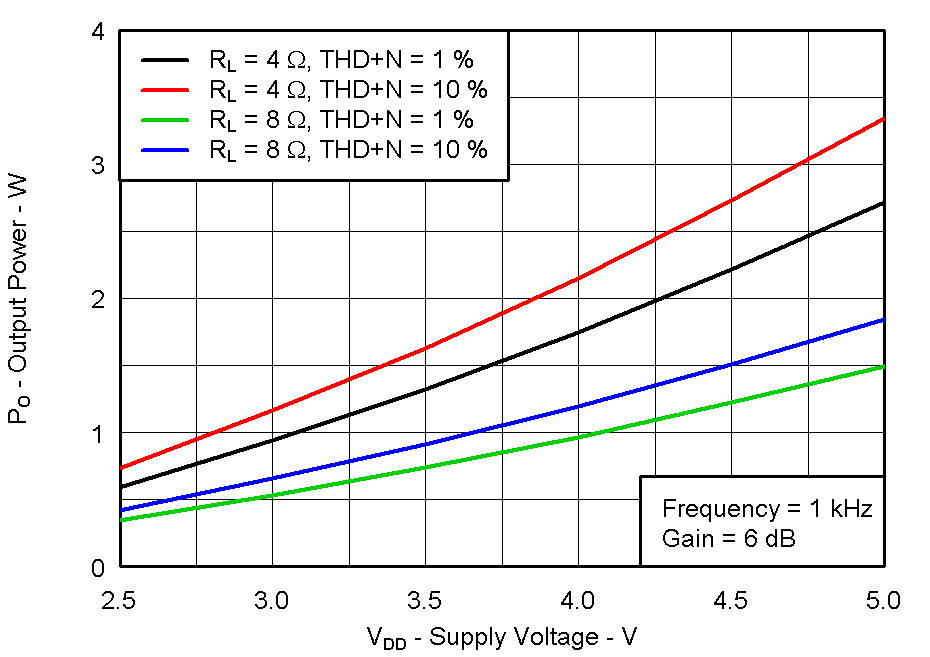 Figure 11. Output Power vs Supply Resistance
Figure 11. Output Power vs Supply Resistance
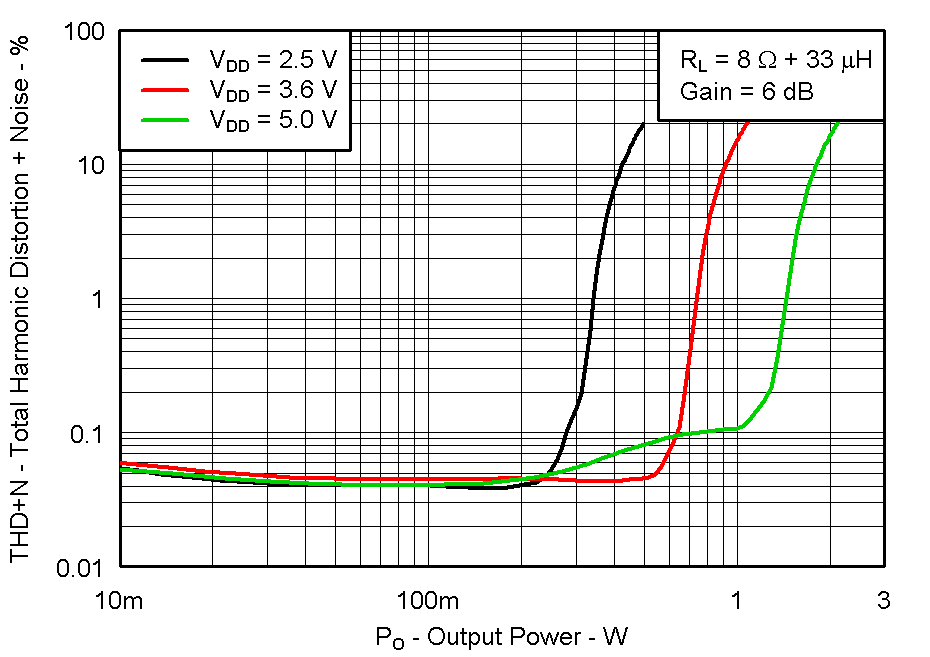 Figure 13. THD + Noise vs Output Power
Figure 13. THD + Noise vs Output Power
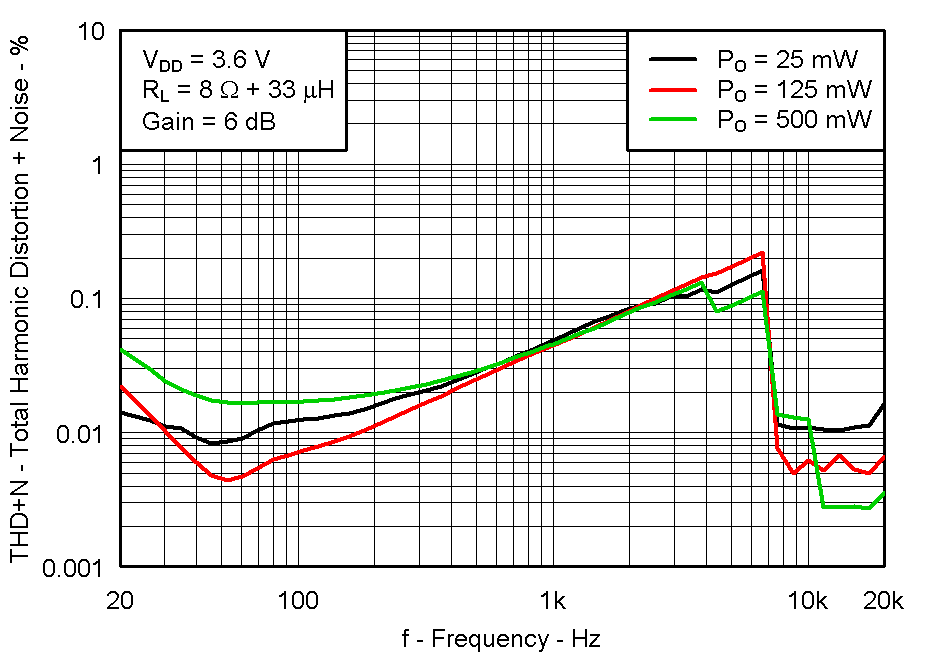 Figure 15. THD + Noise vs Frequency
Figure 15. THD + Noise vs Frequency
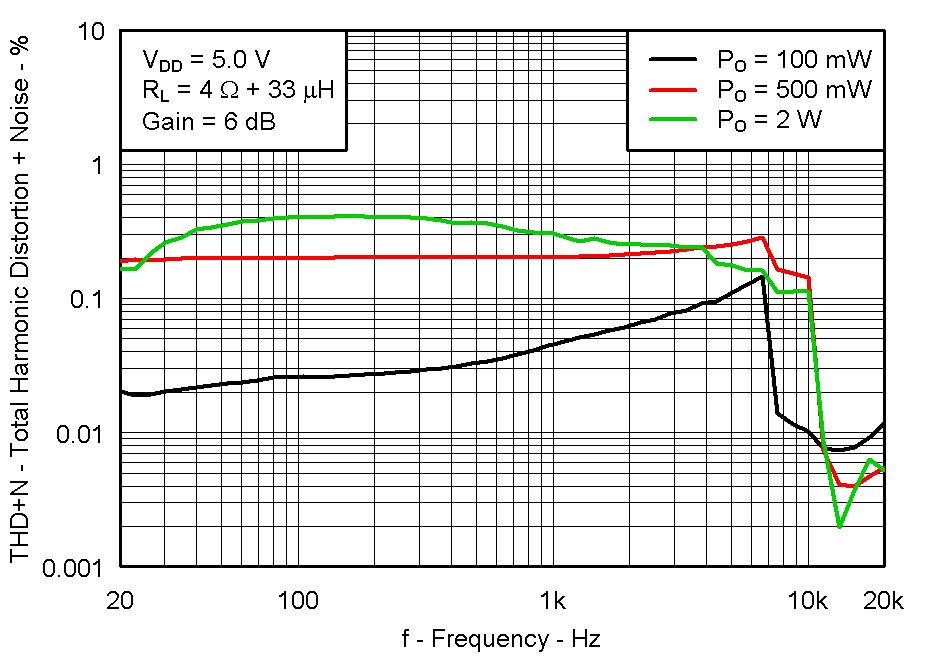 Figure 17. THD + Noise vs Frequency
Figure 17. THD + Noise vs Frequency
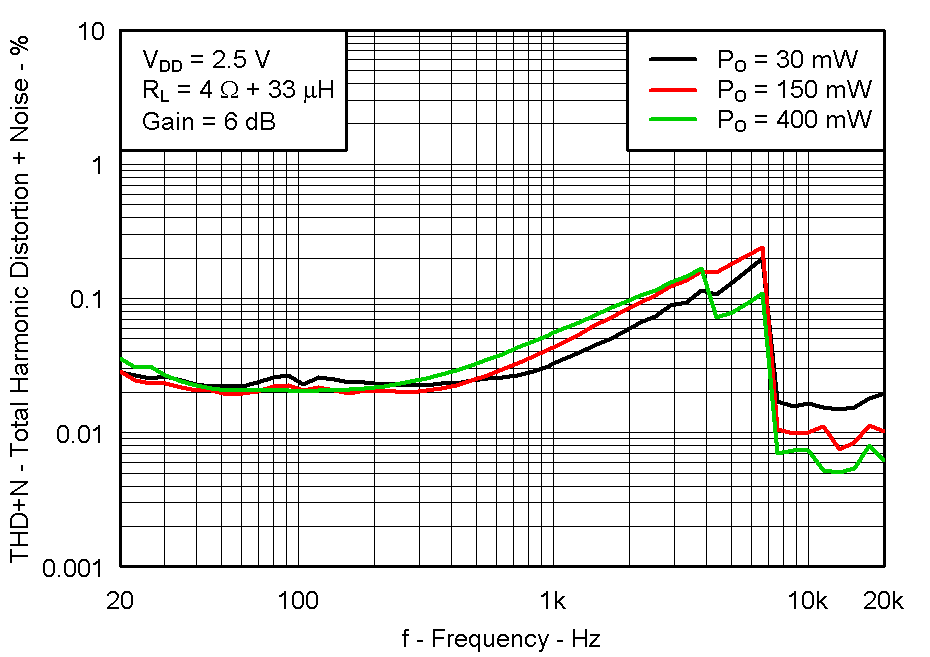 Figure 19. THD + Noise vs Frequency
Figure 19. THD + Noise vs Frequency
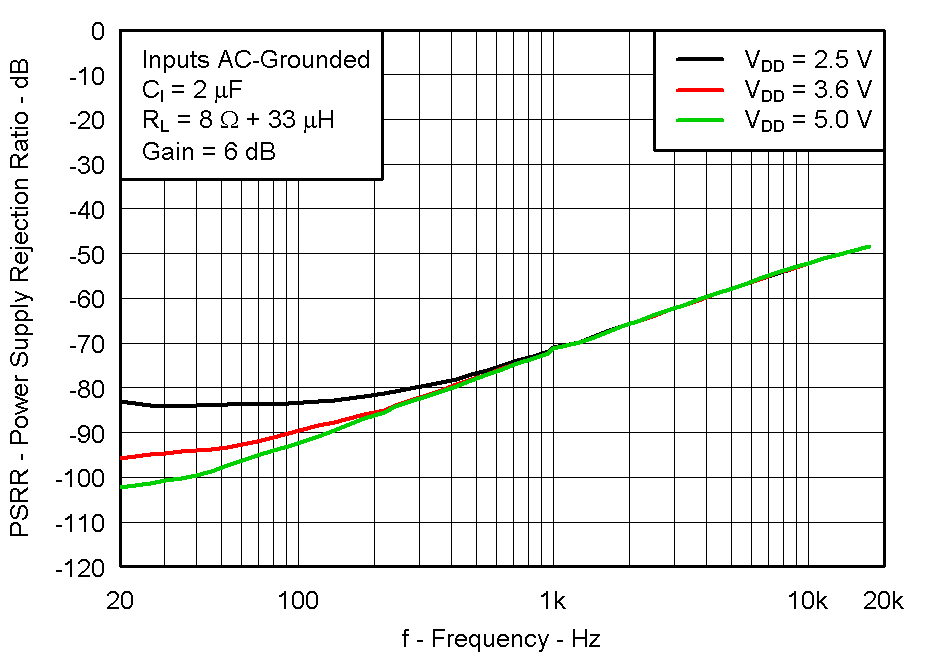 Figure 21. Power Supply Rejection Ratio vs Frequency
Figure 21. Power Supply Rejection Ratio vs Frequency
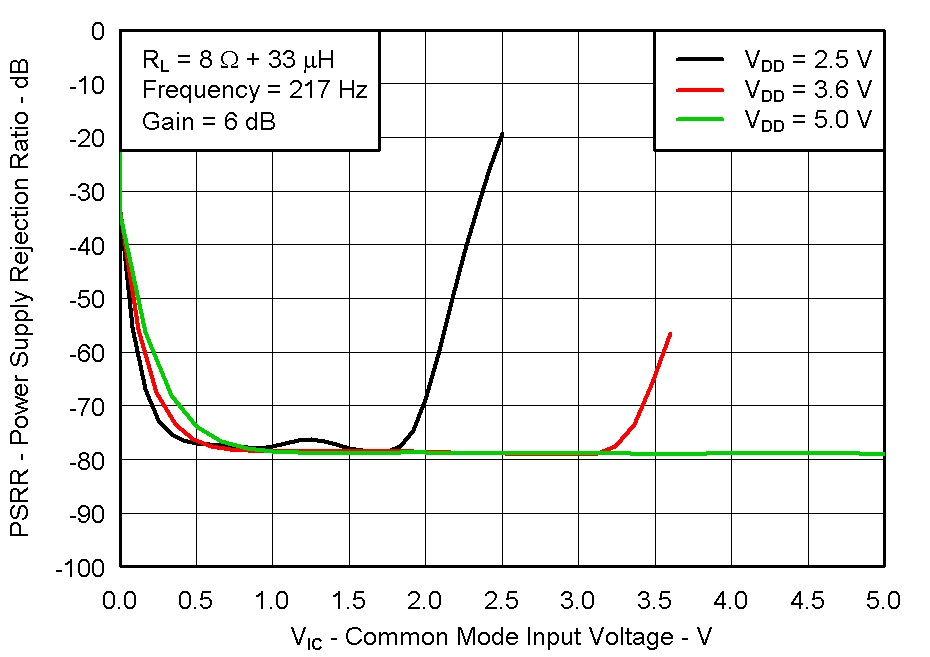 Figure 23. Power Supply Rejection Ratio vs Common Mode Input Voltage
Figure 23. Power Supply Rejection Ratio vs Common Mode Input Voltage
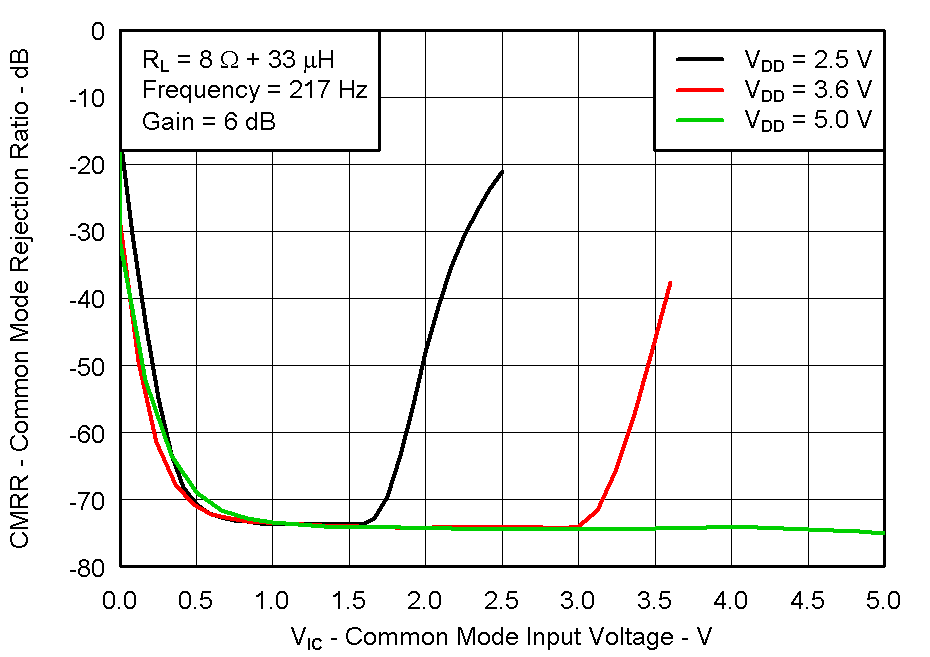 Figure 25. Common Mode Rejection Ratio vs Common Mode Input Voltage
Figure 25. Common Mode Rejection Ratio vs Common Mode Input Voltage
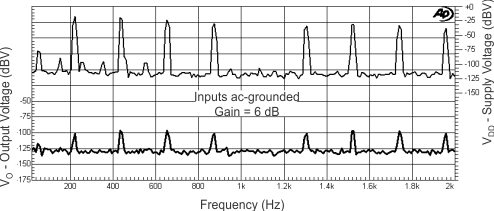 Figure 27. GSM Power Supply Rejection vs Frequency
Figure 27. GSM Power Supply Rejection vs Frequency
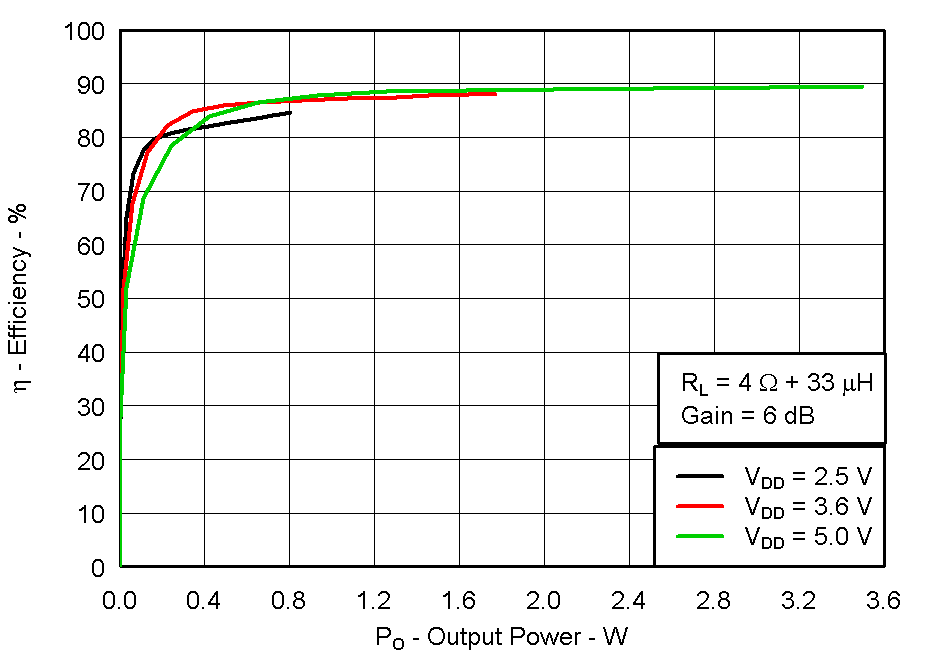 Figure 2. Efficiency vs Output Power
Figure 2. Efficiency vs Output Power
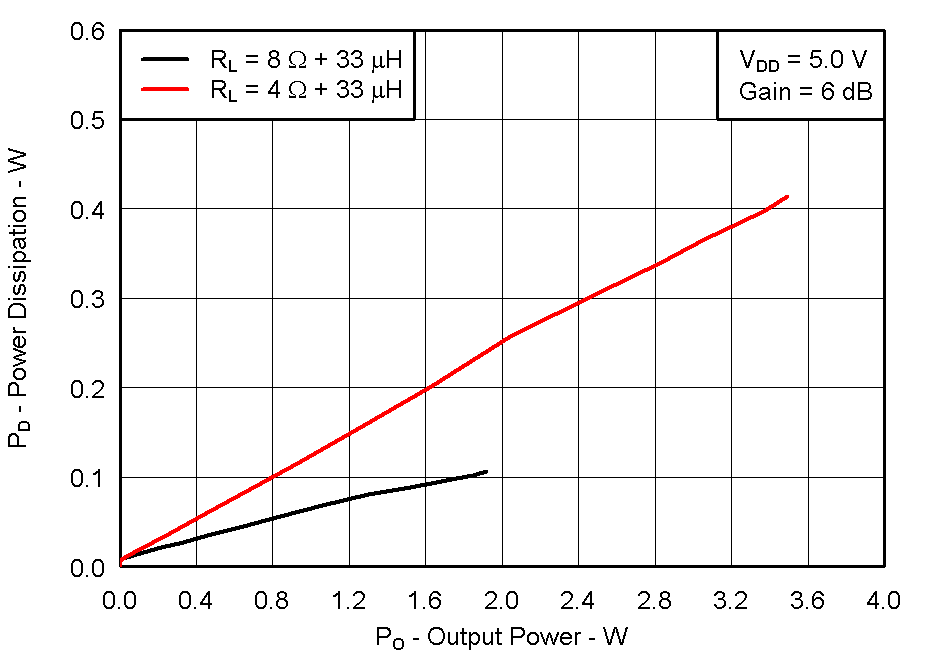 Figure 4. Power Dissipation vs Output Power
Figure 4. Power Dissipation vs Output Power
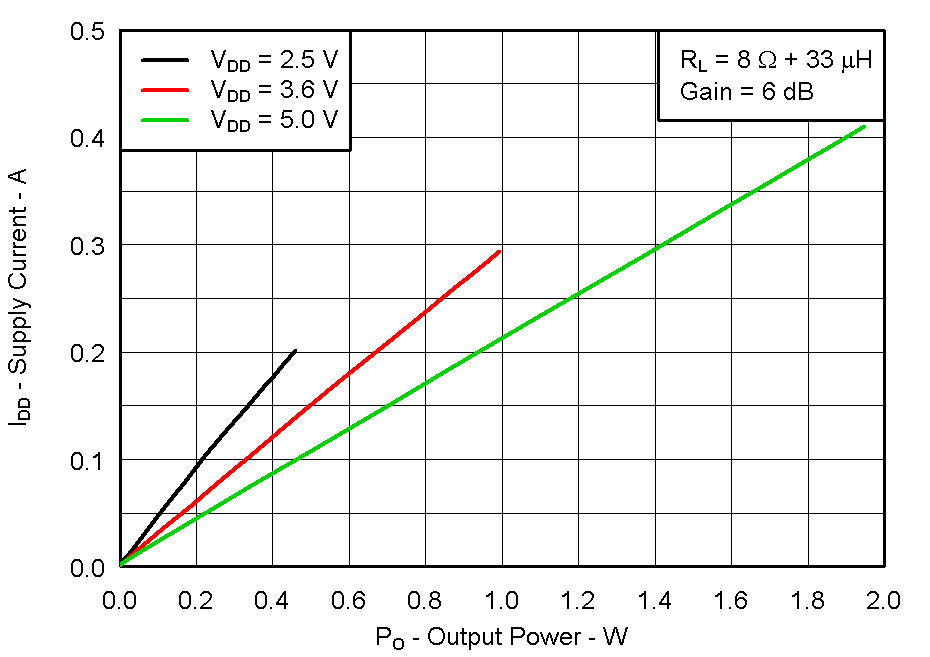 Figure 6. Supply Current vs Output Power
Figure 6. Supply Current vs Output Power
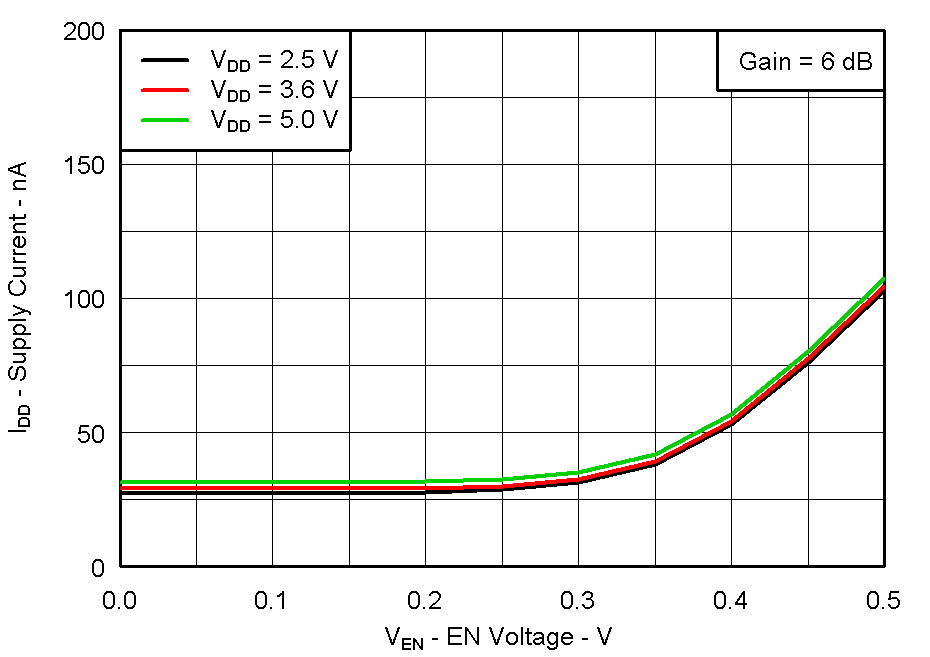 Figure 8. Supply Current vs EN Voltage
Figure 8. Supply Current vs EN Voltage
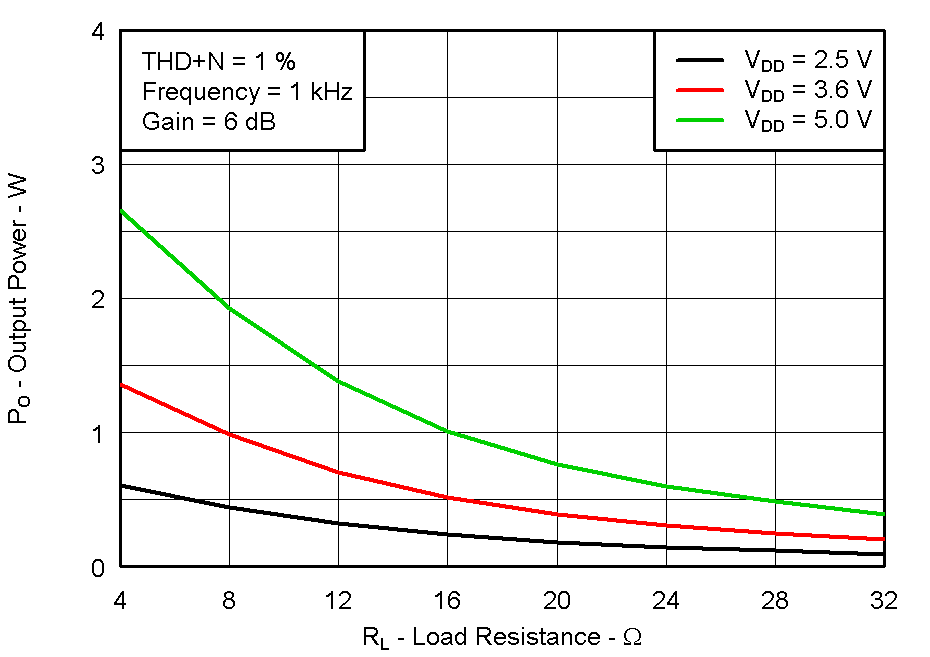 Figure 10. Output Power vs Load Resistance
Figure 10. Output Power vs Load Resistance
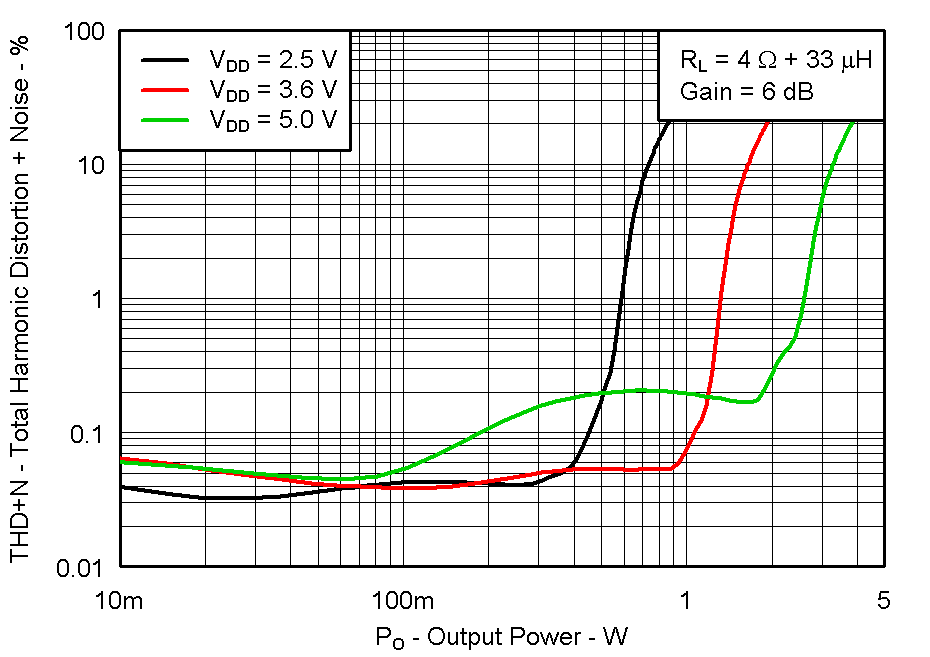 Figure 12. THD + Noise vs Output Power
Figure 12. THD + Noise vs Output Power
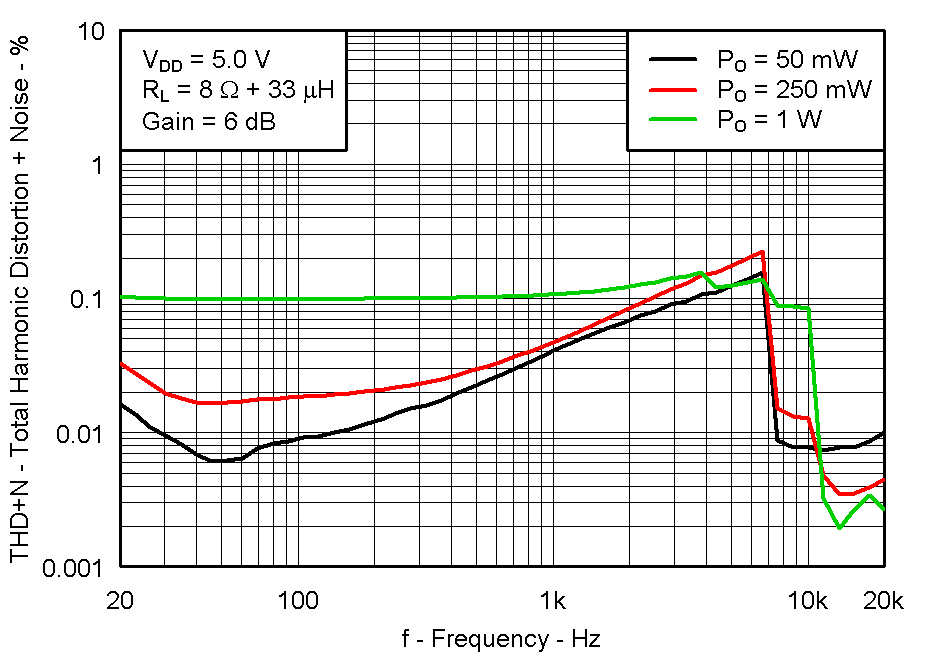 Figure 14. THD + Noise vs Frequency
Figure 14. THD + Noise vs Frequency
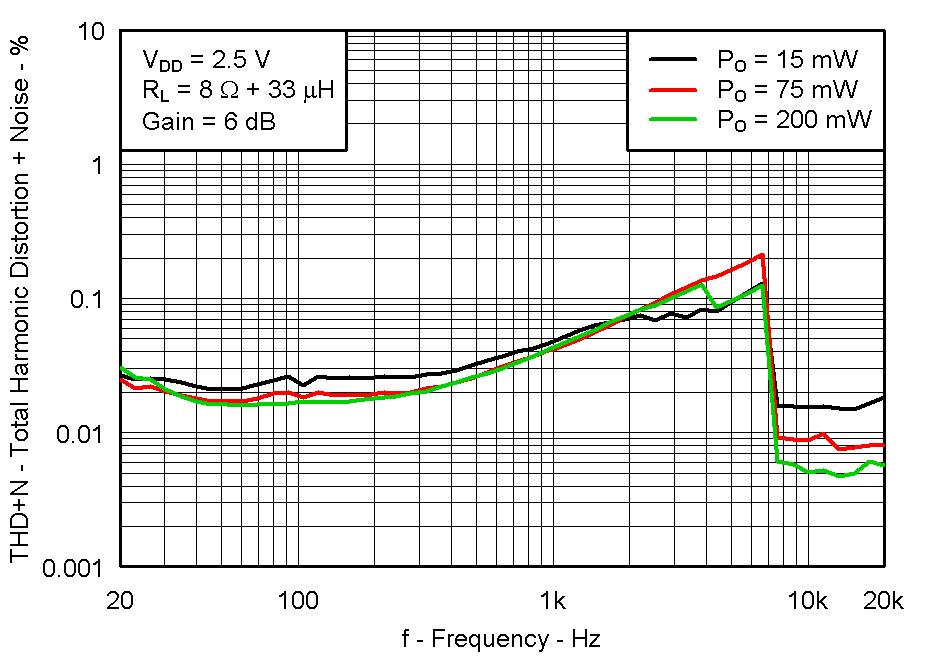 Figure 16. THD + Noise vs Frequency
Figure 16. THD + Noise vs Frequency
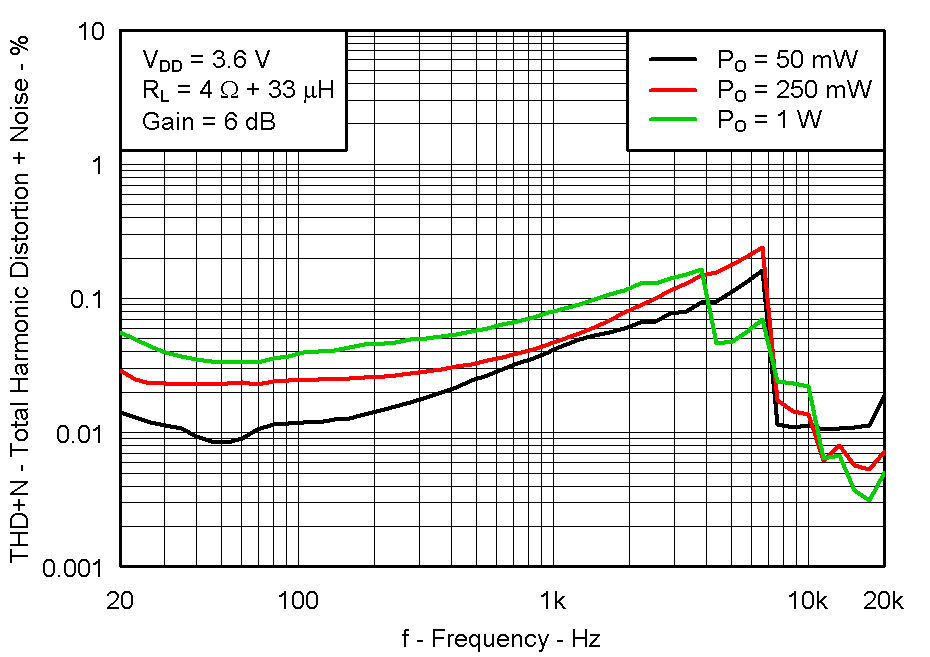 Figure 18. THD + Noise vs Frequency
Figure 18. THD + Noise vs Frequency
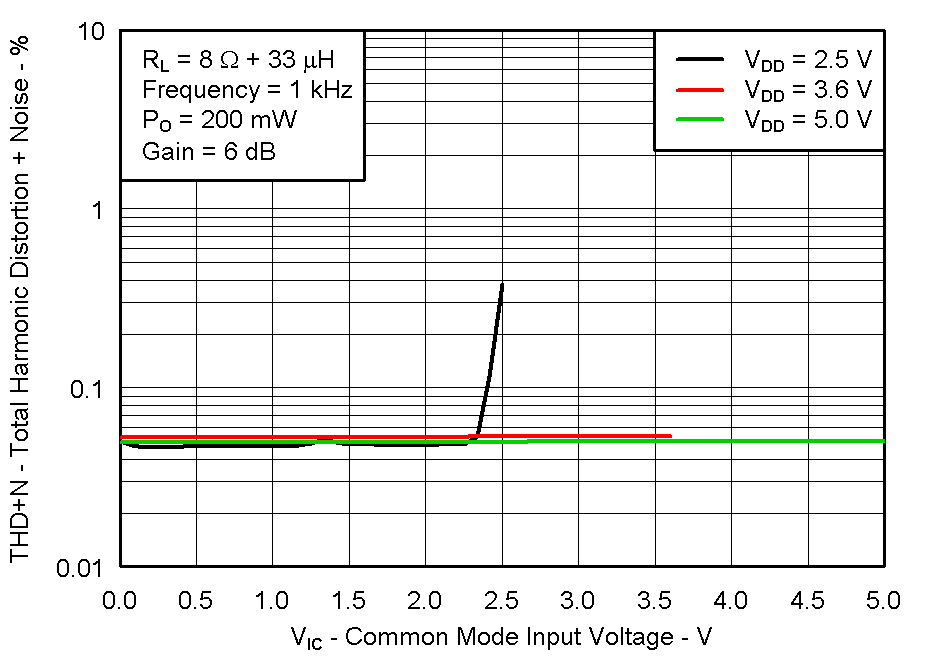 Figure 20. THD + Noise vs Common Mode Input Voltage
Figure 20. THD + Noise vs Common Mode Input Voltage
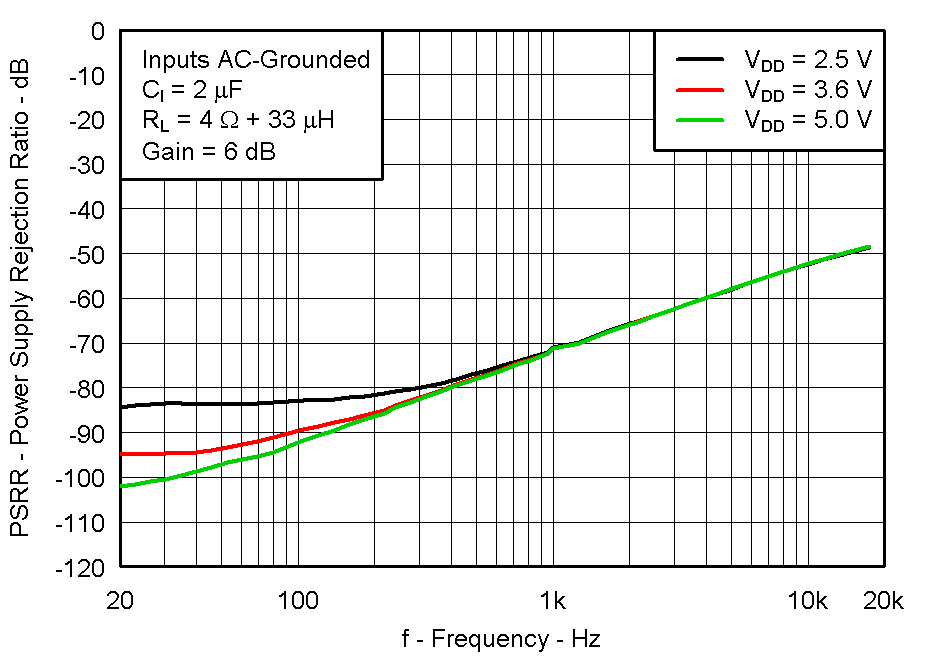 Figure 22. Power Supply Rejection Ratio vs Frequency
Figure 22. Power Supply Rejection Ratio vs Frequency
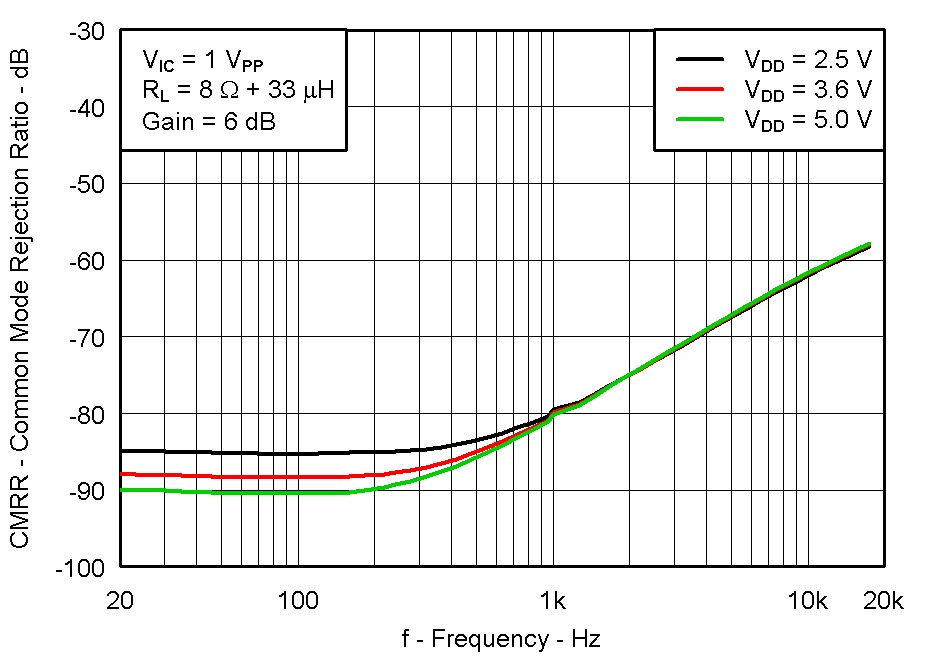 Figure 24. Common Mode Rejection Ratio vs Frequency
Figure 24. Common Mode Rejection Ratio vs Frequency
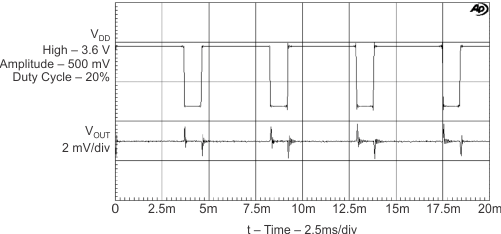 Figure 26. GSM Power Supply Rejection vs Time
Figure 26. GSM Power Supply Rejection vs Time